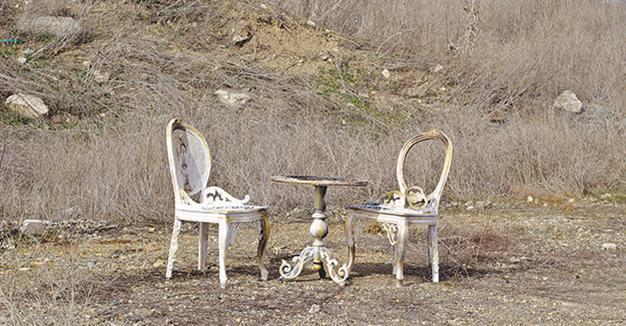Aslı Kutluay’s ‘Melting Point’ in Venice
ISTANBUL
 As a preview for early visitors to the 2016 Venice Biennial of Architecture, Turkish designer and artist Aslı Kutluay has displayed her new works in Venice.
As a preview for early visitors to the 2016 Venice Biennial of Architecture, Turkish designer and artist Aslı Kutluay has displayed her new works in Venice. Curated by Vittorio Urbani with Elisa Genna, the show titled “Melting Point,” which opened on April 7 with Ziya Azazi’s “Dervish in Progress” performance, can be seen at a new art space in the Magazzino Gallery - Palazzo Contarini Polignac on the Grand Canal, one of the most important Early Renaissance buildings in the city.
Kutluay lives and works in Ankara. She takes a strong interest in presenting the world’s cultural diversities, dilemmas and richness. She transmits her observations into evocative stories displaying them in paintings, sculptures and installations.
The artist has produced a coherent body of new works, “non-functional” pieces of furniture, intended to create a connection among the artwork, the place and the visitors.
The design of works also suggests a way of purification to recover what we’re losing in terms of ecology, both of nature and mind, and in terms of the quality of relationships between human beings.
The work “Wirenets,” for example, is a symbol of borders. This work questions when “we really need borders and when we do not need them.”
The installation “Aftermath,” made by two Victorian garden chairs and a table, seems to have been corrupted and melted by heat and pollution. At the same time it’s a critique on the “battle of powers” which the artist sees as the cause of the world’s decay.
Kutluay’s site-specific work is balanced on the threshold between art and design as conventionally intended. If “art” is a metaphor transformed in an object, “design” is about the industrial production of functional objects, rethought and redesigned according to esthetic ideas but with respect to its functional destination.
The works in Kutluay’s exhibition assess if these two fields can be mixed further, and their traditional division challenged to help us go deeper in this direction.
The exhibition can be seen through April 27.
















